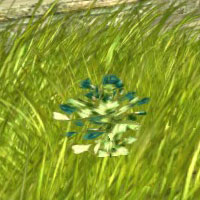
|
Asheron's Tears
Puteulanus lamentae
This lively little plant blooms in early spring, displaying a large number of tiny blue-gray to blue-green flowers. The plant itself does not grow taller than 8 inches, and prefers to remain nestled among the taller grasses of the fields.
The origin of the name is unclear, but it is thought to refer to one of the occassions where the great Asheron had cause to weep. Perhaps his tears fell down from his great tower into the grass below, bringing forth this flower.
|
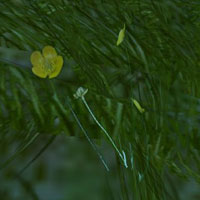
|
Buttercup
Ranunculus cerinus
The flowers that give the Buttercup its name are a creamy shade of yellow, with the petals curved upward in a shape resembling a flask or bowl. This plant, contrary to its name, is poisonous.
This plant was apparently introduced via seeds on some ancient Isparian visitor, as it was known before Isparians arrived in Dereth.
|
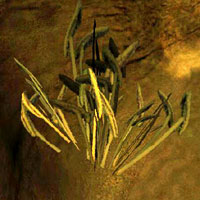
|
Cavern Grain
Seaneous rodiculosis
Often used by cave-dwelling and subterranian species as a food source. The grains are actually quite tasty when properly cooked, and can be eaten plain or made into breads.
Species such as Vermin can subsist almost entirely on a diet of Cavern Grain and fungi.
|
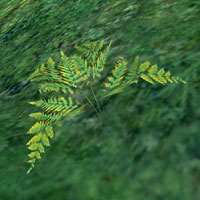
|
Common Fern
Thelypteris kunthii
Fronds are divided into seven narrow branches. These fronds are 1 to 3 feet long. The stalks rise at intervals from stout black underground rootstocks.
In the spring, before the fronds uncurl, they can be harvested, boiled or steamed, and eaten in honor of the fleeting spring. The fronds, once unfurled, are not edible.
|
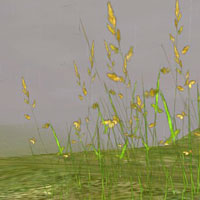
|
Field Grain
Hordeum distychum
A common wild grain, related to grass but with larger seeds than the grasses.
It is thought that this may be a remnant of organized agriculture in Dereth, and that early settlers may have ground the seeds for flour.
|
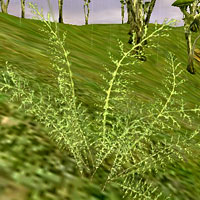
|
Lace Fern
Microlepia strigosa
Submit details about this plant!
|
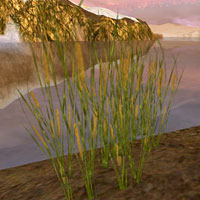
|
Lashertail
Lasher latifolia
Primarily emergent from subterranean rhizome, leaves long and strap-like, flowers inconspicuous in floral head with sexes separate, wind pollinated. This plant is pivotal in providing habitat for small wetland animals and birds.
The rhizomes of Lashertail may be harvested, dried, and powdered to form a palatable flour, with which flatbread can be made by adding a vial of water and clapping the two together.
|
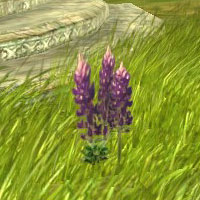
|
Snaptyrant
Tyrannus angustifolia
Herbaceous perennial wildflower, with creeping roots and stalks of showy purple flowers, to 2 feet tall. Snaptyrants appear in temperate climates, after the winter snow has left the ground.
Snaptyrants are so named for the way the individual flowers "snap" like miniature tyrant mouths when gently pressed on the sides.
|
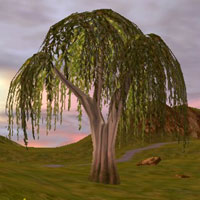
|
Willow
Salix babylonica
A large ornamental tree, with long thin branches of downward drooping leaves.
The Willow tree is considered a soft wood, and is a popular material for carving. It has been used in the past to carve talismans for ancient mystical arts.
|
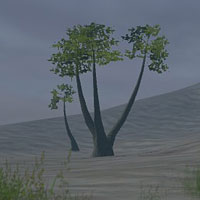
|
Unidentified
Submit details about this plant!
Seen on the shores near Lost Wish Curse of the Undead area.
|



 Botany Guides
Botany Guides Kingdom Fungi
Kingdom Fungi
 Eco Alerts
Eco Alerts Fun Facts
Fun Facts Reedshark Hunter
Reedshark Hunter
 Desktop Dereth
Desktop Dereth Archaeology
Archaeology Lithomorphism
Lithomorphism TDC Explorer
TDC Explorer


 Botany Guides
Botany Guides Kingdom Fungi
Kingdom Fungi
 Eco Alerts
Eco Alerts Fun Facts
Fun Facts Reedshark Hunter
Reedshark Hunter
 Desktop Dereth
Desktop Dereth Archaeology
Archaeology Lithomorphism
Lithomorphism TDC Explorer
TDC Explorer